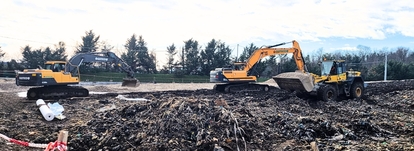Sustainability in construction sites and remediation sites
In our construction sites, the use of aggregates from the Pradamano recovery plant is frequent (for example for embankments and road sub-bases, backfills, restorations) or from the Monfalcone recovery plant (silt and sand for use in non-structured works).
In our remediation works of contaminated sites, we apply sustainability principles not only in the processes, but we also include them in the methodological choices and in the new characterization technologies (in the geological/hydrogeological, chemical and biological sphere), without forgetting the importance of information visualization and management tools to support decision-making strategies.
The remediation activity contributes to the ecological transition: it reduces the risks associated with environmental contamination, and restores compromised ecosystems to a healthy and sustainable state.
Elena Iaiza Technical Manager Environment Division
